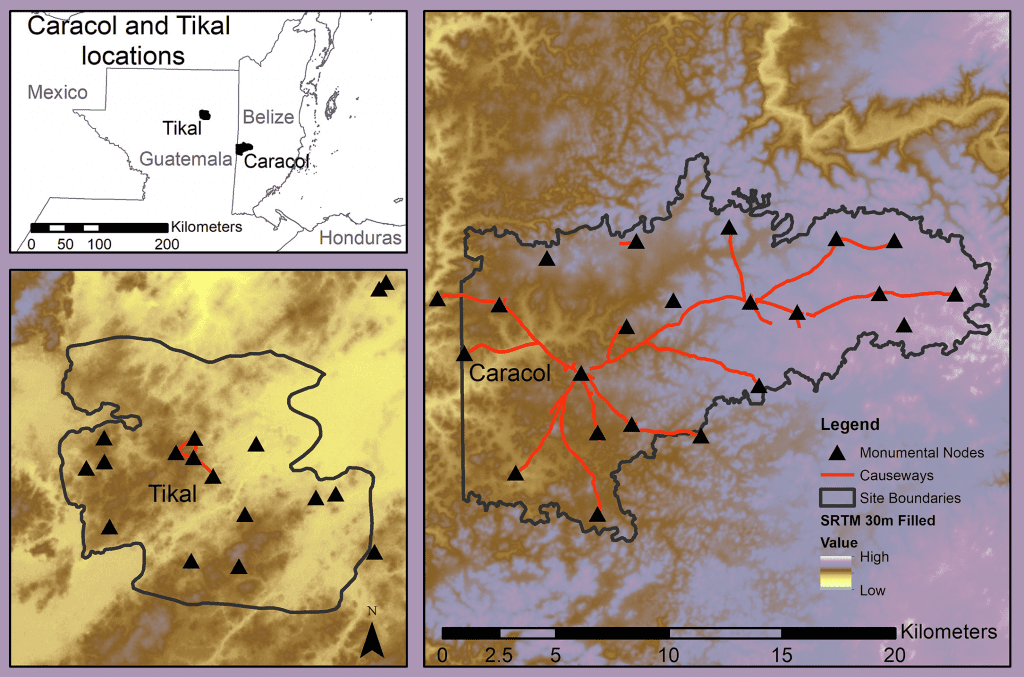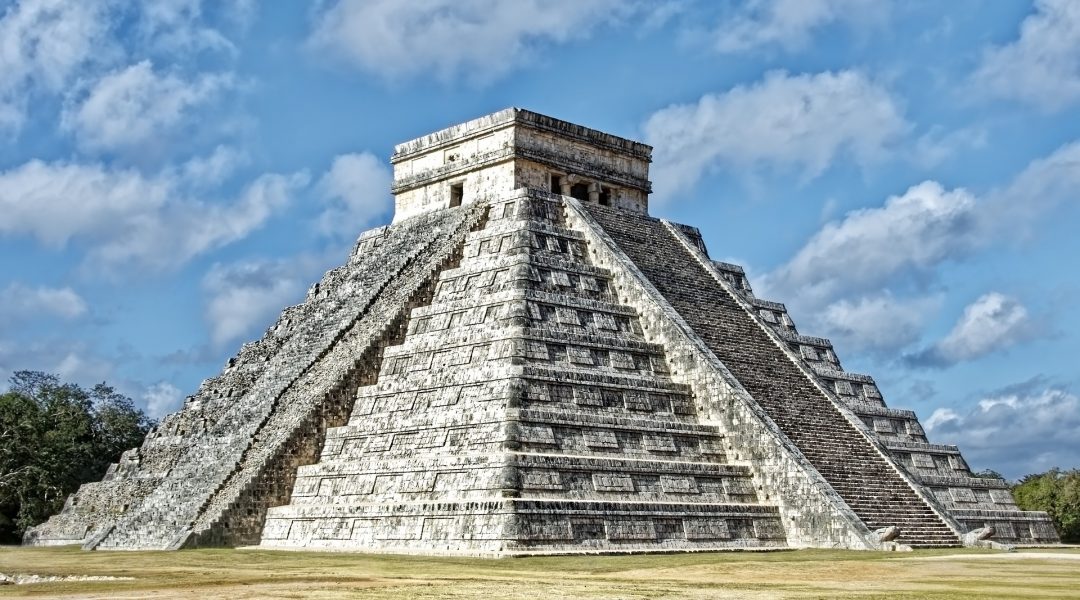The Classic Period (roughly 300 to 900 CE) Maya cities of Caracol and Tikal possessed unique urban morphologies of water management. They were engineered to harvest rainfall runoff for agricultural and potable water uses. Each city adapted water management strategies to suit the hydrology of their landscapes, with the differences in water infrastructure reflecting the differences in their environments.

The term “Maya” encompasses a wide variation of urban, environmental, and social practices in both the past and in the present day. Highlighting the ubiquity of unique responses to environmental problems helps showcase that “the ancient Maya” is not a single, indivisible unit. Instead, the ancient Maya utilized multiple strategies that articulated with the challenges and opportunities presented by their environments.
Caracol exists in a rugged, hilly, and karst environment. Its residents invested in their landscape through the construction of agricultural terraces and residential reservoirs. The juxtaposition of these features created Caracol’s garden-like city appearance. The people of Caracol unified their garden city through a dendritic causeway system linking their dispersed marketplaces and administrative nodes to the downtown city center. The people of Tikal, by contrast, constructed a denser urban center with many large reservoirs. This reflects the landscape of Tikal, which possesses lower slopes and is generally smoother. Additionally, the people of Tikal invested in agriculture around seasonally swampy “bajos” surrounding their city.
The differences in urban form and hydrology of both cities conditioned the resulting water management strategies employed and the modified landscapes of both locations. We can see evidence of this in the archaeological record today. Because of its higher slopes, Caracol’s landscape presents a greater hazard for soil erosion and faster rainfall runoff. Yet, the construction of distributed residential reservoirs and agricultural terraces acted to collect rainfall, increase soil saturation, and reduce this runoff. Tikal’s landscape, on the whole, presents fewer hazards in terms of soil erosion, but perhaps greater issues from torrential rainfall.

















